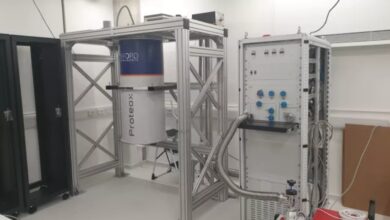Astronomers Discover Vast Water Reservoir Circling a Black Hole

Cosmic revelation that expands our understanding of the universe, astronomers have detected an immense reservoir of water orbiting around a supermassive black hole. This discovery, announced by teams from NASA’s Jet Propulsion Laboratory and the California Institute of Technology (Caltech), reveals a water supply equivalent to 140 trillion times all the water in Earth’s oceans combined.
Located more than 12 billion light-years away, the water is found surrounding a quasar named APM 08279+5255, which is powered by one of the universe’s most massive black holes, estimated to be about 20 billion times more massive than our sun. The quasar emits radiation with the intensity of a thousand trillion suns, making it one of the most luminous objects in the observable universe.
“This discovery is extraordinary because it shows that water is pervasive throughout the universe, even in its earliest stages,” said Matt Bradford, a scientist at NASA’s Jet Propulsion Laboratory, who led one of the research teams. The water, present in the form of vapor, is distributed around the black hole in a gas region spanning hundreds of light-years.
The presence of such a vast amount of water in the vicinity of a black hole was detected using the Z-Spec instrument at Caltech’s Submillimeter Observatory in Hawaii. This instrument allowed scientists to observe signals from water vapor, carbon monoxide, and other molecular gases, providing insights into the conditions around this quasar.
This finding not only underscores the ubiquity of water in space but also sheds light on the dynamics of quasars, which are believed to be fueled by the infall of gas into central black holes. The water vapor here is relatively warm and dense, conditions that are different from what is typically observed in our galaxy, indicating unique processes at work in this distant part of the universe.
Researchers speculate that this water could influence the growth of the black hole and the formation of stars in the galaxy hosting the quasar. The study suggests that the water vapor might be part of the material feeding the black hole, with some of it possibly escaping to form new stars or being ejected into space.
“By studying this distant quasar, we can learn more about how galaxies and their central black holes formed and evolved over cosmic time,” explained Bradford. This discovery could also help astronomers understand the early universe’s composition and the mechanisms that drive the creation of cosmic structures.
The results of these observations have been published in the Astrophysical Journal Letters, further fueling discussions and research into the role of water in cosmic environments and the early universe’s chemistry.
Posts on X have been abuzz with this news, highlighting the vastness of this water reservoir and the intriguing dynamics of black holes. This discovery challenges our understanding of the universe’s complexity and the fundamental elements that constitute it, even in the most extreme environments like those around black holes.




